
RF applications are seeking smaller size, weight, reduced power consumption, and better linearity solutions.
RF Applications:
In satellite communication, high throughput satellites in the geosynchronous Earth orbit, medium Earth orbit, and low Earth orbit form satellite constellations to provide internet connectivity throughout the planet. Satellite communications operate in the K band, which spans from 12 GHz to 40 GHz. Currently, thousands of low Earth orbit (LEO) satellites are circling the Earth and delivering broadband Internet access, navigation, maritime surveillance, remote sensing, and other services.
In 5G Fixed Wireless Access, 5G infrastructure devices like Small Cells, Femto Cells, Pico Cells, and Repeaters use mmWave phased array in the K band for beam forming to provide connectivity.
In Aerospace and Defense applications, different types of radar systems are used in aircrafts to monitor radar environments. Radar systems can alert pilots of any hostile or foreign activity using Active Electronically Scanned Array (AESA) Radars. AESA Radars utilize beams of radio waves that can be electronically steered to point in different directions without moving its antenna.
SWaP-C:
RF applications consistently seek SWaP-C or Size, Weight, Power, and Cost benefits. Large dish antennas (Figure A) are being replaced with phased array antennas (Figure B) for satellite communication that requires smaller size components for integration. Lower weight components are needed to have more payload for the satellite.
High RF Power is linear with high P1dB and IP3. It is used to reduce distortion and efficient with high PAE to minimize power consumption.
All these benefits in RF components are achieved at a low total operating cost, including manufacturing and components costs.

Source: Adobe
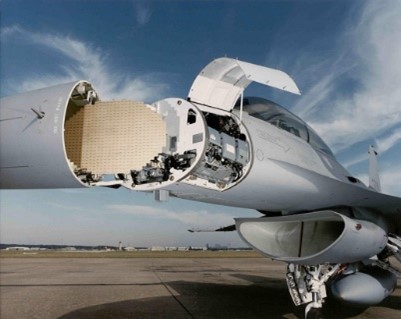
Source: Adobe
Power Amplifiers (PA) Requirements:
Power Amplifiers (PAs) play a key role at the transmitter in RF applications. One of the biggest PA requirements is that it can operate in its linear region to minimize RF distortion. However, this increases complexity, cost, size, and weight, since more gain stages are then required to offset the reduction in RF output power that can be delivered in this region. Even then, gain distortion can come into play. Also known as AM/AM and AM/PM distortion, it describes the output phase variation against input power and is often caused by a PA’s nonlinear capacitors. This occurs when the PA is operated near or even beyond its saturation point to maximize conversion efficiency and generate as much power as possible, which leads to device nonlinearities and a compression or peaking of the PA with input power. Compensation is required using techniques like digital predistortion.
Developers face another type of distortion with satellite communications systems that use higher-order modulation schemes. This includes 64/128/256 Quadrature Amplitude Modulation (QAM), which is extremely sensitive to non-linear behavior. Another challenge is achieving satisfactory peak-to-average power ratio (PAPR)—that is, the ratio of the highest power the PA will produce to its average power. PAPR determines how much data can be sent and is proportional to the average power. At the same time, though, the size of the PA needed for a given format depends on the peak power.
These and other conflicting challenges can only be met with Gallium Nitride (GaN) on Silicon Carbide (SiC) Power Amplifiers for satellite communication, 5G, and Aerospace & Defense applications.
Gallium Nitride (GaN) on Silicon Carbide (SiC) Power Amplifiers:
Gallium Nitride (GaN) on Silicon Carbide (SiC) has the highest power density to generate high linear output power with high efficiency. GaN on SiC power amplifiers can operate at high frequencies in the Ka, Ku band from 12 GHz to 40 GHz for satellite communication, 5G and have broad bandwidths, high gain with better thermal properties meeting the requirements of RF applications. Microchip provides RF solutions using GaN on SiC technology meeting the SWaP-C requirement for components. ICP2840 is a flagship device which operates in 27.5–31 GHz providing continuous wave (CW) output power of 9 watts and pulsed output power of 10 watts with a Gain of 22 dB and power added efficiency of 22%. Graph C shows Linear PAE across frequency and output power levels for ICP2840 and Graph D shows Linear Gain across frequency and output power levels.
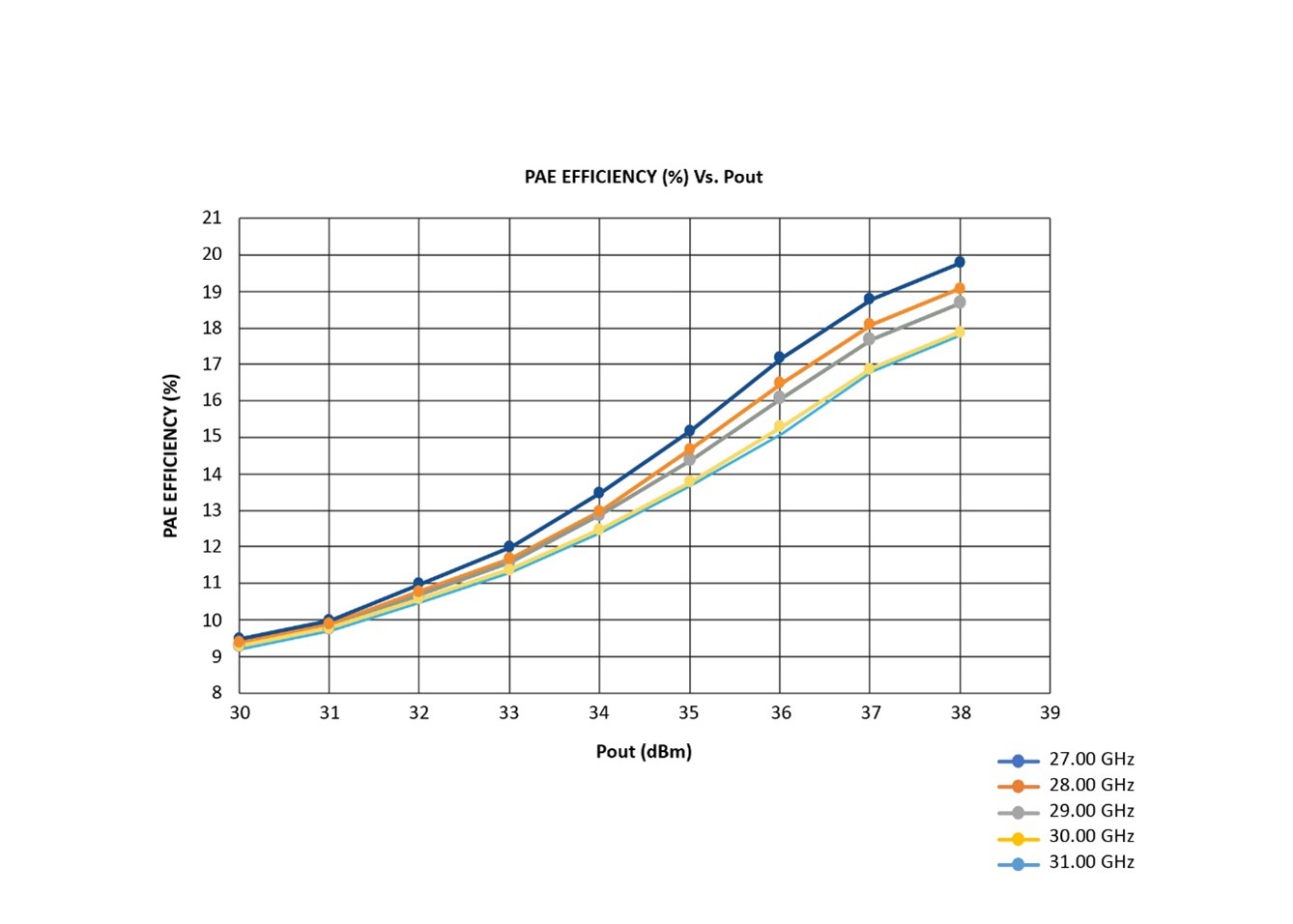
Source: Microchip
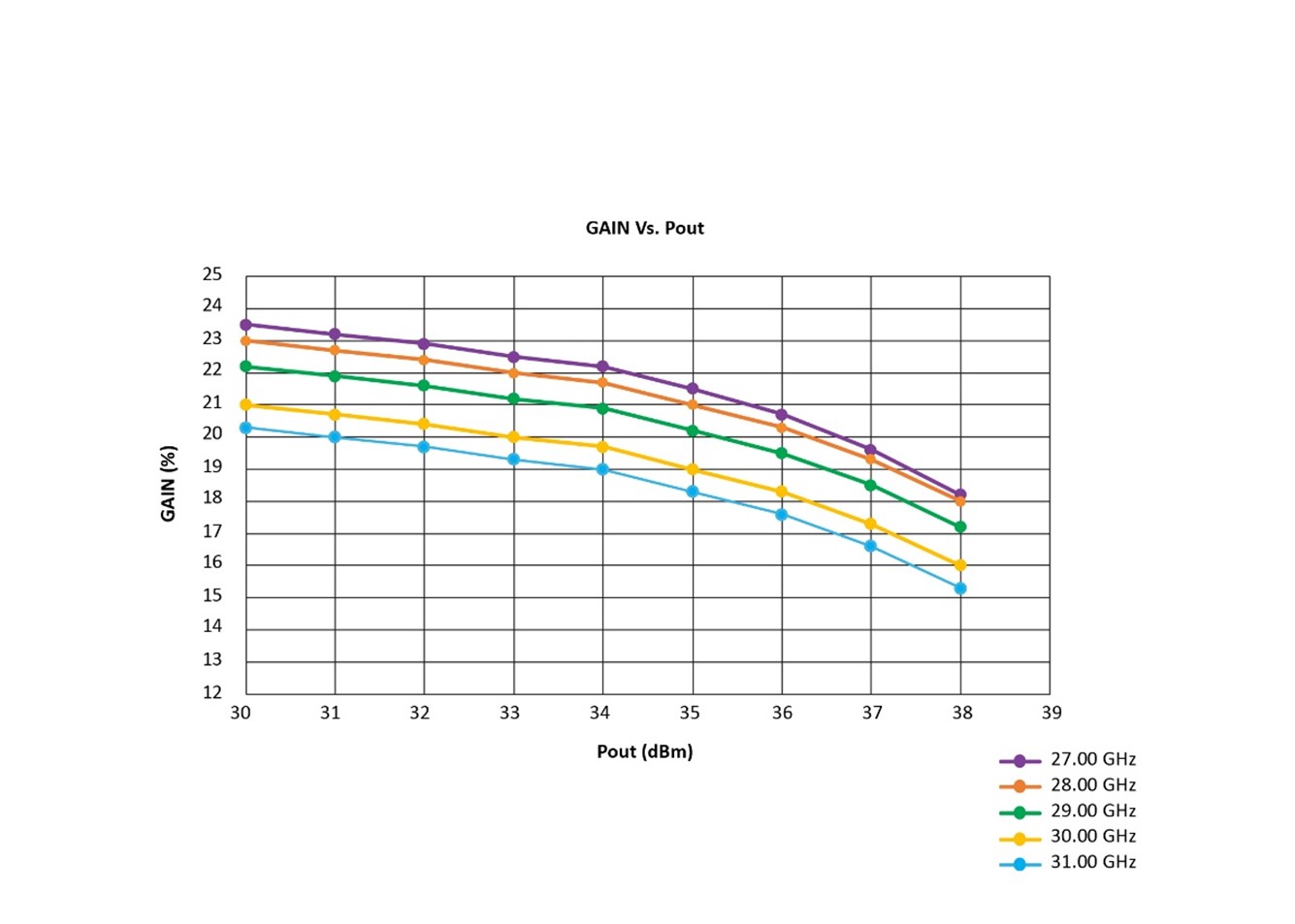
Source: Microchip
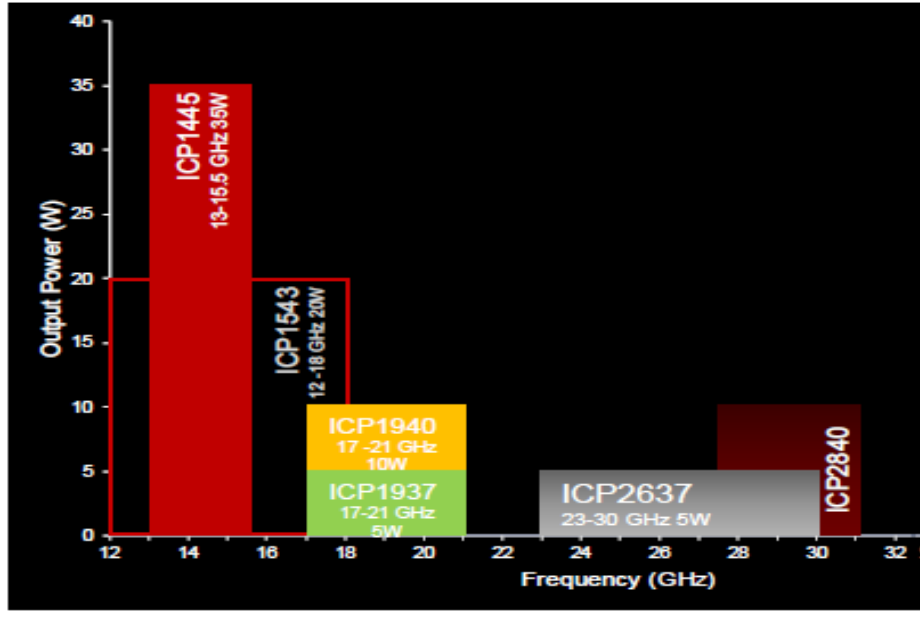
Source: Microchip
ICP2840 generates 9W continuous wave output power in the Ka band from 27.5–31 GHz for uplink frequency for satellite communication as well as 28 GHz 5G frequency band.
ICP2637 has a wide bandwidth from 23–30 GHz and generates 5 watts CW output power and is offered in a QFN package as well as in die form.
ICP1445 generates 35 watts pulsed output power in the 13–15.5 GHz frequency Band.
ICP1543 operates in the Ku band 12 to 18 GHz generating 20 watts CW output power.
These PAs have high gain and power added efficiency using GaN on SiC technology and meet the requirements at Ku/Ka band for 5G, Satellite Communication, and Aerospace & Defense applications. GaN on SiC with its highest power density provides the optimal power amplifier solutions for these applications.
For more information, visit our power amplifiers web page
About Baljit Chandhoke
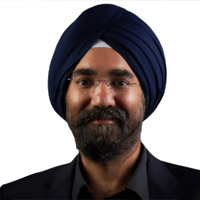 |
Baljit Chandhoke is the Product Manager for Microchip’s industry-leading portfolio of RF products. He has more than 15 years of product line management experience in customer facing roles–leading teams in defining new products, competitive positioning, driving design wins, revenue, and go-to-market strategies across wireless infrastructure, mobility (5G), aerospace, and defense market segments. He has authored multiple articles in leading industry publications and has participated in several YouTube videos and webinars. Prior to joining Microchip, Baljit worked in leadership positions at GlobalFoundries, IDT, ON Semiconductor, and Cypress Semiconductor. He has a Master’s in Business Administration (M.B.A) from Arizona State University, a M.S. in Telecommunications from University of Colorado, Boulder, and a Bachelors in Electronics and Telecommunications Engineering from University of Mumbai, India. |

